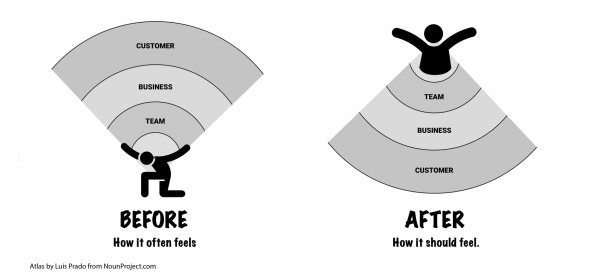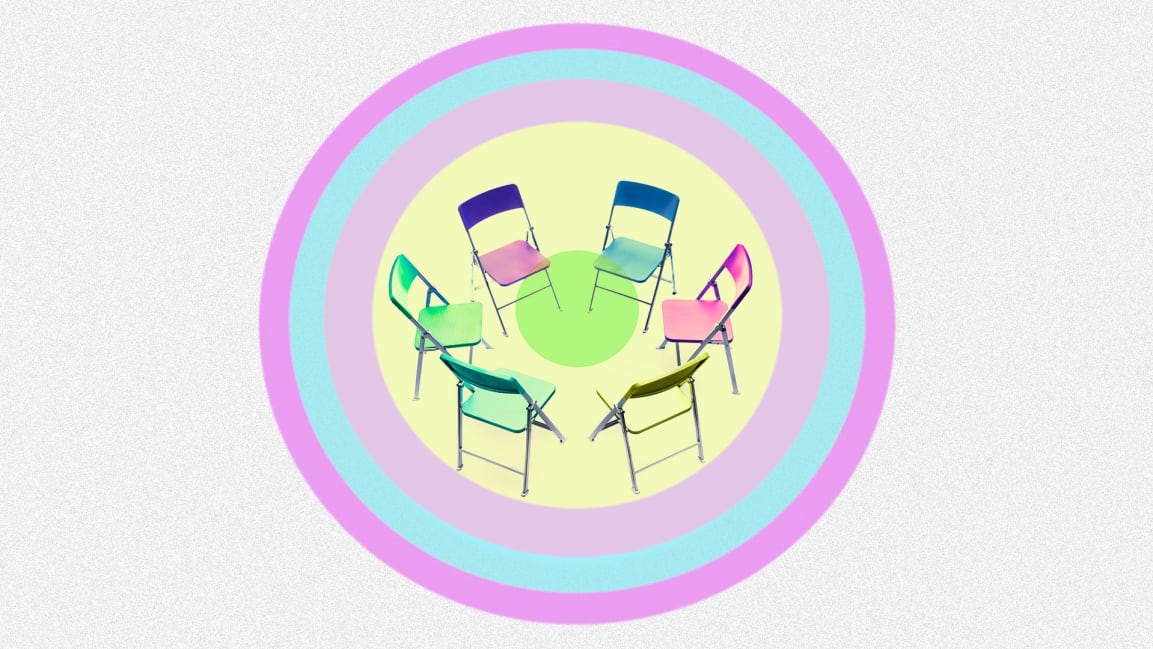This meeting framework may be the most productive you’ll have this year
By Klaus Heesch
Everyone’s struggling, whether with their career or personal life. Remote work can make it especially difficult to stay connected and have your voice heard. The longer that leaders let their team members float in the ether without real connection can make even little annoyances and stressors build up.
As leaders, we need to ask ourselves, “How long do we want to let things fester?”
I’m hoping your answer will be: “Not a single day.”
As a team lead, I’ve found it beneficial to meet on the regular. I’m a big fan of twice-weekly standups. Quick chats can be good to sync on what everyone is working on, the tasks needed, and the interdependencies.
That’s the “what.”
But the “how” we are working together is one of the keys to a healthy work environment and culture. As we work through a historic wave of disengagement otherwise known as the Great Resignation, there has never been a more important time to make people feel valued. This holds true no matter the size of your team or business.
It’s incredibly important to stop on a regular basis and work as a team to identify what’s working, what’s not working, and what might be missing.
The “Retro”
Many organizations—particularly those with tech teams—have regular rituals called “retros.” This is short for “retrospective.” Typically done at the end of a project or program, it’s a chance for the team to get together and reflect on the individuals, interactions, processes, and tools that got the product or initiative to completion.
A retro gives you as a leader, a chance to check the pulse of the team and get their direct input and opinions on how everyone is working together.
Make it a monthly ritual
I believe you don’t have to wait until the end of some project or initiative to host this ritual. My suggestion is to host it monthly. In this way, it becomes something everyone can count on regardless of the workload and deliverables.
It becomes something that your team can count on as a chance to come together. Repetition benefits trust. And when done right, they may even actually look forward to it.
Each retro will end with some of the team members given a task. Having a couple of weeks in between these rituals can give the team members time to make necessary adjustments.
For those who accept the responsibility for taking action, it can be empowering and a constant reminder that culture is something everyone has a hand in. For leaders, showing up to each retro with a report on the actions you’ve taken based on the team’s feedback is a powerful way to let them know that their voices are being heard. That you are acting in the best interest of the team.
Ask good questions
There’s no better way to get to know someone than to ask questions and simply listen to them. This applies whether it’s a small group of individuals or cross-functional teams.
This ritual is based on asking three very helpful questions:
- What’s working? This is an opportunity for each member to express their gratitude and recognize the people, the efforts, and the inputs that they appreciate.
- What’s not working? This is an opportunity to identify and discuss the hurdles that may be getting in the way.
- What is missing? This is where ideation and innovation can get a boost. Is there something we could add to the mix? Another ritual? A learning resource, data, or research that can be done? Or maybe it’s a skill set that is missing from the team.
An “inside-out” framework
How many times have each of us felt that we were holding the weight of the team or business? This ritual and framework are intended to flip that.
When asking the questions above, it’s important to let each member of your team know that their individual opinions, thoughts, and feelings matter. While we’re focused on the context of career and business, keep in mind that each individual must be made to feel as though the business supports them. Put the individual at the top of a pyramid in a way that helps assure them that the team and the business are here to support them.
Here’s where this standard ritual can turn into a power-house of culture and ideation. It can help build morale, increase retention, and ultimately lead to successful outcomes for the end customer.
For without healthy individuals, you can’t have happy, healthy teams. Without happy, healthy teams, it’s difficult to have a healthy, happy business. And if your business isn’t healthy, you cannot do anything to truly help your customers.
Imagine a series of concentric circles. A target, if you will. In the center is the “individual.” The next ring is the “team.” Then, the “business.” And finally, the largest ring that surrounds it all is the “customer.”

In her book Beyond Happiness, Jenn Lim describes a very similar structure as “Me/We/Community/Planet.” It’s a terrific read on why the health of the individual really matters. And how to optimize for it.
Here, we aren’t extending it out beyond the bounds of the company and its customer. But it’s easy to imagine how the rings of “individual/team/business/customer” fit inside of the larger “community” and ultimately, the “planet,” as Lim describes it.
How to retro step-by-step
Meet every other Friday (or at the cadence/day that works best for you and your team). Gather everyone on a Zoom call, or in a room together. Or both.
Ice-Breaker (15 minutes)
Start off by having everyone share what they are looking forward to for the weekend. Or choose something of your own to get everyone into a sharing mood.
Set-up (5 minutes)
Establish the framework by talking through the components of the concentric circles. Let them know that you are here to work together to ensure that the individual’s and teams’ needs are being met.
Explain that each person will work to get their thoughts out and onto a collaboration board. Then you will all talk through everyone’s input, group them into themes, and vote on what the team feels are the most pressing and important items.
If this is not the first time you have run this type of retro, you’ll want to take some time to report out on the status of the top three action items from the previous retro.
Post-up (15 minutes)
Set timer for 15 minutes. Time can be longer or shorter, as needed. You’ll figure out what works best as you repeat this ritual over time.
Put on some down-tempo, mellow background music. Consider letting a different team member volunteer to select the music each time.
Each participant spends time writing short Post-It notes considering these three things:
- What’s working (Keep) for myself/team/business/customer
- What’s not working (Stop) for myself/team/business/customer
- What’s missing (Start) for myself/team/business/customer
Read-out (5 minutes per person)
Ask for a volunteer to go first and talk through their Post-Its. As each person speaks, the leader or facilitator will move each note onto the framework. If someone else has already shared a similar thing, move the Post-It next to theirs and don’t spend time talking through it (unless there is something additional the team might benefit from knowing).
Sorting and grouping (10 minutes)
Everyone can work together to finish grouping cards into themes and give each theme a title.
Voting (5 minutes max)
Everyone will vote on what themes they feel are most important and each person gets three votes. You can place more than one vote on a theme if you feel it’s incredibly important.
Discussion and delegating (15 minutes)
Talk through the top three themes and discuss what might be done to approach and address them. Get individuals to volunteer to take responsibility for changing those things that can be acted on. You, as the team leader, may need to take responsibility for all of the things. Agree that each delegate will come to the next meeting with a report on what has happened.
Additional considerations
Some people won’t have a whole lot of things to add to the board. That’s okay. And sometimes, the input may seem trivial. It isn’t. I’ve been in retros where people posted bits of gratitude and things to celebrate. That’s awesome. And don’t be surprised if some of the feedback relates to the retro itself, the framework, the frequency/cadence, or the outcomes. Listen intently and adjust the retro based on the team’s feedback.
Some topics or themes may come up repeatedly at these retros and may not be prioritized in any one session. However, if they do come up repeatedly, you as the team lead should make sure that the issue gets addressed. Don’t let even the little things fester.
Now you can start working to strengthen your team and their work from the inside out.
Klaus Heesch is head of Optimism & Sustainable Growth, an Experience Design leader, speaker, and happiness practitioner.
Fast Company , Read Full Story
(24)



